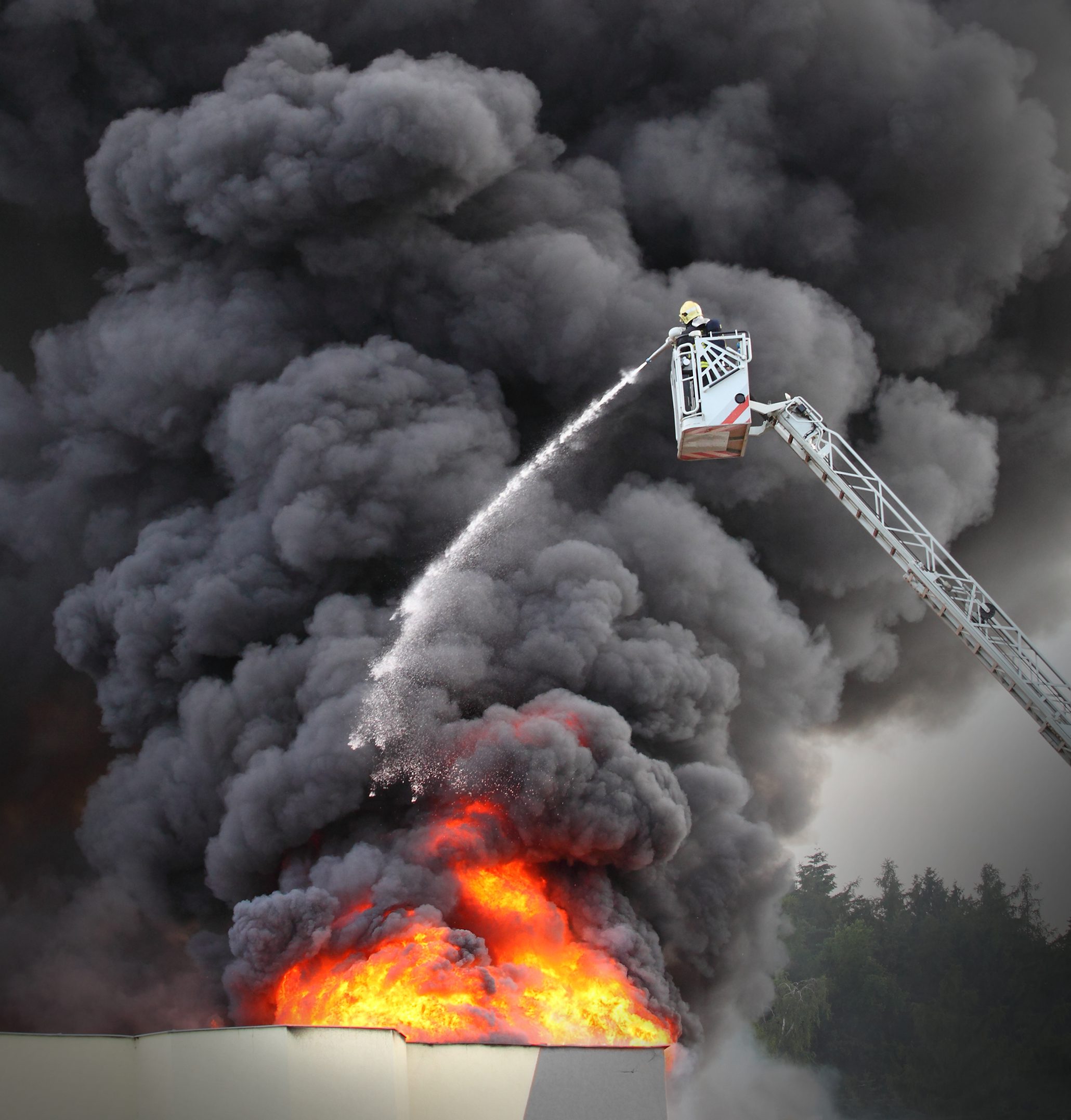Commercial and industrial property and casualty insurers have historically focused primarily on electrical fire protection, which – in case a fire occurs – minimizes property damage and business interruption along with reducing the risk of injury and death. However, today’s quickly evolving smart sensing technologies are enabling a new, more valuable move to switch that focus to electrical fire prevention, providing a true improvement in resiliency.
These new capabilities provide two major benefits for insurers:
- They further reduce the occurrence of risk and its associated financial consequences.
- They offer the chance to foster closer customer relationships by enabling value-added services as differentiators in what can be a commoditized market, often driven by a search for lower rates.
“Protection” vs. “Prevention:” What’s the difference?

When it comes to managing risk, electrical fire protection is focused on minimizing impacts if an event, such as a fire, occurs. Requiring sprinklers, automatic smoke-exhaust fans, and automatic fire suppression equipment in case of fire are examples of protection tactics.
Prevention, on the other hand, has the intent of reducing the occurrence of risk in the first place. So, insurers have long required safety audits and annual thermographic inspections of electrical distribution systems as a means of preventing a future fire from breaking out. Unfortunately, these tactics only provide snapshots of a point in time – conditions could easily change over the next day, month or year to raise fire risks. This is why protection has been the dominant strategy for insurers up until now.
Today, though, new technologies are more affordable. Smart sensing devices combined with cloud-based data analytics are enabling annual inspections to be supported by continuous thermal monitoring that’s on the job 24 hours a day every day of the year. This evolution is enabling forward-thinking insurers to break out of the rate-driven competition by offering new products that include risk management as a service.
What does an electrical fire risk-prevention-based strategy look like?
The first step in a prevention-based strategy for electrical systems – conducting an initial audit – will be familiar to risk engineers. Such an audit will include:
- Identification of specific electrical risks
- Analysis of risks and their likelihood of occurrence and consequences, both in term of possible property damage and business interruption
- Evaluation and ranking of risks to provide a baseline of exposure
The second step is to develop a mitigation strategy. This involves determining which risk can be removed or reduced, or how the potential consequences can be limited, along with a plan for what recovery would look like if a potential risk actually occurred.
Today’s approach adds three new steps:
- Monitoring, with selected sensors in strategic locations throughout the electrical system to collect data continuously on operational conditions
- Analysis, using sensor-derived data either locally or delivered to cloud-based data analytics software, to identify trends and alert local personnel to conditions that need addressing
- Recommending and implementing corrective actions with ongoing feedback and analysis overtime to ensure changes have been made – and that those changes delivered the desired operational improvements
How does this change insurance?
Under this new internet-of-things (IoT), prevention-focused approach, insurers become more than a name on a premium payment and a source of loss compensation – instead, they can grow to be seen as a risk-mitigation partner. Leading insurance consultants suggest this is how insurers can thrive in a changing market.
For example, Simon Burtwell, insurance advisory leader for the UK for EY has this advice: “Don’t think about an insurance product as a commodity that is bought simply on price; it must be a service solution that is bought based on perceived value to reduce risk and manage loss.” And McKinsey’s Ari Chester, Johannes-Tobias Lorenz, Maximilian Straub, and Christian Stüer recently estimated the hidden benefit of value-added services in commercial insurance lines could total $2 billion in Europe and North America, with $750 million – $900 million in risk mitigation, alone, including services related to predictive analytics, knowledge sharing, and risk training. An added $250 million to $300 million could be earned in risk assessment services.
Some insurers are already getting on board with a new focus on prevention. When no fixed fire protection is installed, monitoring and the resulting ability to act quickly in case of trouble can help minimize damage. “This is a clear and valuable loss prevention solution,” stated Pierre Louis Mell, Risk Engineering Director at HDI France. “This is also in line with the predictive maintenance and loss prevention solutions we believe in. We are clearly going toward more IoT devices, and this will help make electrical installations more reliable and even help prevent fires from happening.”
Other major underwriters leading the way in this approach include Zurich North America, which has launched a new U.S. risk services unit. This group includes a risk engineering team with services available to both Zurich customers and non-customers, alike. And Munich Re’s HSB unit has widened its engineering offering with new consultancy offerings, including equipment condition and performance services.
How Schneider Electric can help insurers
As a leader in energy management and a longtime partner with customers seeking to improve their resilience, Schneider Electric has developed several insurer-directed offerings. These start with audits that help insurers and their customers to establish risk baselines for both their employees and electrical, both in terms of safety and potential business interruption.
We also have developed a large portfolio of sensors able to monitor for specific risks – for instance, over-temperature conditions either in low-voltage or medium-voltage settings, or the performance of arc flash mitigation solutions in transformer applications. To make the best out of smart sensors, we also offer monitoring solutions at the customer site and also cloud-based monitoring services.
Building your own solutions
Now is the time for commercial and industrial insurers to begin considering a shift toward helping their customers reduce their risks – and improve their resiliency – with IoT-based risk-prevention services. This approach can help underwriters build stronger relationships with their customers, add new lines of revenue and improve their own resiliency. Schneider Electric can be your technology partner in building these new solutions.
Download our brochure to learn more about how IIoT solutions can help you keep your operations running safely and smoothly. You can also visit our EcoStruxure Power homepage for more on the advantages of IoT-connected power systems. Otherwise, you can reach out to your local customer support office.



